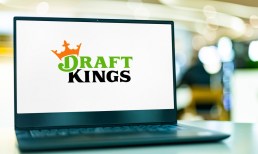Underwriting, aided by technology — and at least some level of automation — can get faster and more intuitive, helping payment service providers (PSPs) approve merchants with speed and security.
The shift has been in the works for a while, as Stripe and Square detonated what David O’Brien, CEO at Agreement Express, described as a “nuclear bomb” on the service provider industry. That’s led to a difference in expectations about how platforms, as they tap into those aforementioned firms’ solutions, have been able to help merchants embed payments into their customer-facing interactions.
The very nature of who can be a merchant — and where they can ply their trade — is changing in the digital age, O’Brien told Karen Webster. Mobile devices, mobile card readers and all manner of payment acceptance conduits are changing commerce. The fruit vendor on a sidewalk in Mexico can be a merchant capable of taking contactless payments, he noted.
That changes the game for PSPs that want to enable end-to-end payments, and must at the same time recalibrate how they measure and score risk while allowing merchants to onboard and begin accepting payments.
In the bid to enable end-to-end payments, O’Brien said, “when you look at the difference between all the various models and what’s out there” when it comes to merchant onboarding and payments facilitation, providers need to staff strategy war rooms, mulling in which direction they ultimately want to go.
There, nuances mean … well, everything. Generally speaking, PayFacs need less data than other providers. “So on the front end, as far as underwriting, they can make it go much faster,” O’Brien told Webster.
Advertisement: Scroll to Continue
And speed is what everybody wants — but it doesn’t trump everything else. O’Brien noted that PayFac solutions tend to be “out of the box,” and can result in higher costs for merchants (and, by extension, their end customers), and may have transaction volume limits. The result may be a bit counterintuitive amid the great digital shift — namely, individuals may be prodded to pay in cash.
How expensive can it get? As O’Brien told Webster: “I know of one software vendor that makes more money on payments than on their software business.”
On the traditional side of the equation, there’s more underwriting, but speed is (relatively) lacking. Choose the wrong underwriting setup, and the damage can snowball quickly for several reasons.
First, a PayFac might only be paying a few hundred dollars a month for cookie-cutter underwriting services, but a huge chunk of would-be merchants are rejected. The lost potential in onboarded merchants due to ineffective services will end up costing the payment facilitators much more than the service fee.
Second is fraud protection: payment service providers that use less sophisticated underwriting tools leave themselves exposed to significant fraud and chargeback exposure. Using a robust underwriting platform can mitigate this risk by thoroughly checking business owners against global sanctions lists and performing detailed KYC checks on the business, including the Better Business Bureau rating. Monitoring chargeback ratios and payments volume will ensure that the PayFac reduces its long-term exposure to fines and penalties.
Over time, and to move toward the optimal balance, the great digital shift demands that all providers offer a great onboarding experience to merchants, enabling them to take on payments and start offering a range of choices to their end customers while speeding things up. Monetizing payments and judiciously taking on risk can transform service providers into valued partners marked by strong momentum, said O’Brien.
But getting there involves far more than simply embracing advanced technologies. Strategy is key — and strategy entails PSPs looking in the proverbial mirror to examine just where they want to go. As O’Brien told Webster, these days, automation is table stakes — it all boils down to what’s being automated, freeing up critical resources to add value for merchants and taking non-crucial human interaction out of the equation.
“It’s not just ‘let’s automate our tasks and integrations and then we’re fine,’” said O’Brien. Really winning — and gaining merchants’ trust and business — is about flexibility and control. The PayFac or ISO that does not have a grasp on data-driven decision-making will run into problems down the road, he said. Data is what enables end-to-end payments, where the comprehensive collection of data can help providers determine in a “flag up/flag down” decision whether a merchant should be onboarded and allowed to process payments immediately. It all depends on the PSP’s risk appetite.
“We’ve got a customer who literally wants to auto-approve 90 percent of what they’d typically approve anyway, and have those merchants processing payments the same day — and with anything less than that, things will fall behind very quickly,” he predicted.
Expanding Abilities With Automated Underwriting Technology
The times have been rapidly changing, noted O’Brien: “Even at Agreement Express, if you were to come to us a year ago with a certain SaaS vertical you were going after — such as real estate — and you decided to go after a different vertical, like childcare, it would (historically) take months to set up that vertical, because you’d be trying to figure out a whole new approach and what information you need.” Against that backdrop, development teams would get cracking, codes would be written … and that process would be lengthy and expensive.
And today, said O’Brien, “it takes just a few hours. That’s the beauty of technology and configurability.” That flexibility lets Agreement Express’ clients enter with the flip of a few “switches” and templates. But strong change management is needed to make sure the technology works the way it should — and that starts at the top, in the C-suite.
The benefits accrue quickly for the PayFacs/ISOs that help merchants quickly get off the ground, going direct to consumer with increasing frequency, even if they’ve never had an eCommerce presence. The stage is also set for B2B firms to embrace digital means of paying and getting paid, which opens the door to more opportunities for PSPs (who have to make sure they’re underwriting quality merchants, noted O’Brien).
Of the balance between speed and safety, of getting PayFacs and ISOs firmly into the digital age, he said, the goal is to “give them the keys — which gives them the ability to dance.”



